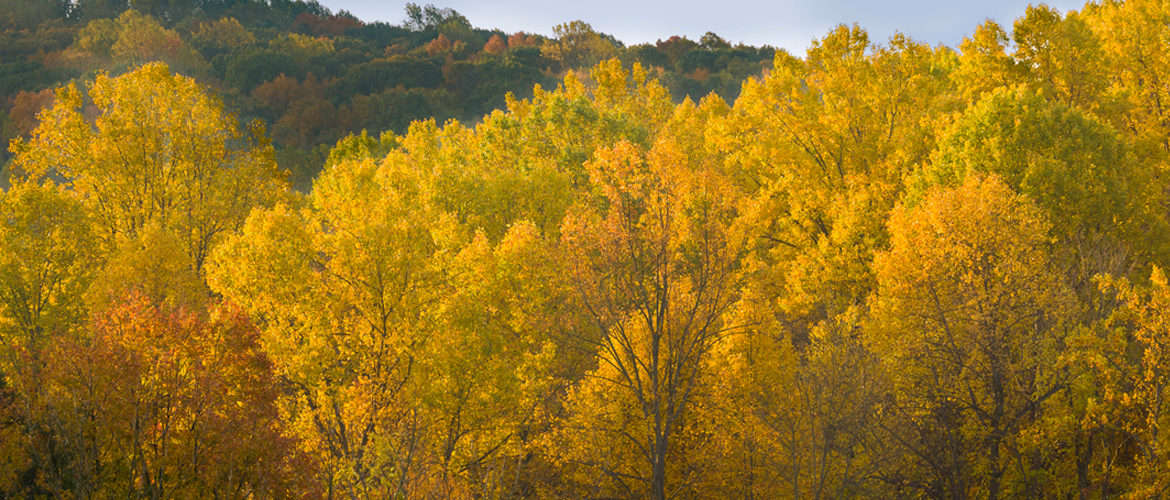 The oldest forest on the property, as well as the most diverse, is a second growth red oak-mixed hardwood forest community located to the southwest of the smallest ponds. This forest has been relatively undisturbed since the 1850s; the canopy is dominated by red & chestnut oaks, tulip tree, American beech, and black birch, accompanied by specimens of big tooth aspen, white ash, and pignut hickory. Flowering dogwood and black cherry shade a shrub layer of spicebush, mapleleaf viburnum, and blueberry, while a diverse herbaceous layer provides additional wildlife food sources and includes Christmas & rattlesnake ferns, wood asters, wild geranium, bellwort, Canada mayflower, and partridgeberry. This forest provides critical habitat to interior forest birds, especially neotropical songbirds such as scarlet tanager, veery, and ovenbirds. Woodpeckers like the flashy Pileated woodpecker are also found here.
The oldest forest on the property, as well as the most diverse, is a second growth red oak-mixed hardwood forest community located to the southwest of the smallest ponds. This forest has been relatively undisturbed since the 1850s; the canopy is dominated by red & chestnut oaks, tulip tree, American beech, and black birch, accompanied by specimens of big tooth aspen, white ash, and pignut hickory. Flowering dogwood and black cherry shade a shrub layer of spicebush, mapleleaf viburnum, and blueberry, while a diverse herbaceous layer provides additional wildlife food sources and includes Christmas & rattlesnake ferns, wood asters, wild geranium, bellwort, Canada mayflower, and partridgeberry. This forest provides critical habitat to interior forest birds, especially neotropical songbirds such as scarlet tanager, veery, and ovenbirds. Woodpeckers like the flashy Pileated woodpecker are also found here.

Heading east, the forest is a young to maturing tulip tree-beech-maple forest community that was released from cultivation in the mid 1930s. Canopy trees also include white ash, black walnut, and mockernut hickory, while sassafrass, redcedar, witch hazel, and several viburnum species thrive in the understory. This forest provides an abundance of trees with cavities and snags, or dead trees, which shelter and feed wildlife.
 Take a Hike
Take a Hike
The Horse-Shoe Trail–which connects the Schuylkill River Trail in Valley Forge National Historic Park with the Appalachian Trail north of Hershey–runs along a forested ridge at the southern end of Welkinweir. Additional hiking trails traverse the lower and mid-slopes. An old roadbed, now a trail, connects the bridge across the Great Pond’s waterfall with the Horse-Shoe Trail. Click to download our trail map!


